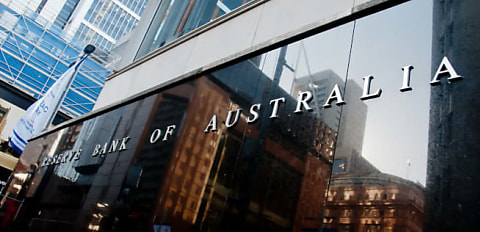According to CBA’s forecasts, headline inflation is believed to have peaked at 7.7 per cent in Q4 2022, slightly below the Reserve Bank’s (RBA) expectation of an 8 per cent high.
While official inflation stats for the final quarter of 2022 are expected to be released on Wednesday (25 January), CBA has predicted that inflation will fall faster than the RBA anticipates over the course of 2023, with headline inflation said to hit 3.4 per cent and underlying inflation at 3.2 per cent in Q4.
This compares to the RBA’s forecast for headline inflation of 4.7 per cent and underlying inflation of 3.8 per cent, as outlined in its statement on monetary policy last November.
However, CBA’s head of Australian economics, Gareth Aird, explained that the bank’s predictions depend on the RBA delivering one final 25 basis point (bp) rate hike in February, taking the cash rate to a peak of 3.35 per cent in the current monetary tightening cycle.
“We believe a higher terminal cash rate is inconsistent with a soft landing. We have 50 bps of rate cuts in our profile for Q423,” he said.
The unemployment rate, which remained at 3.5 per cent in December, is expected by CBA to move higher over the coming months before ending the year at 4.25 per cent.
But the bank pointed out that the direction of movement would be of concern for policymakers once the jobless rate hits 4.0 per cent, which is expected to occur in the third quarter.
“This is an outcome consistent with a soft landing in the economy,” said Mr Aird.
“It is around late Q3 22 that we expect the RBA to adopt an easing bias or at least entertain the idea of policy easing, provided inflation is moving lower and the annual rate of wage growth still has a three-handle on it.”
According to CBA, the RBA will pivot later this year as concerns over high inflation dissipate and the central bank shifts its focus to growth and unemployment.
“On our estimates, the cash rate will be at a deeply restrictive setting at 3.35 per cent and rate cuts will be required in late 2023 to stop the unemployment rate from rising above the level associated with full employment (~4¼ per cent),” he said.
Wage growth is seen as the key risk to CBA’s rate call, with the bank anticipating annual growth in 2023 to peak at 3.75 per cent mid-year before easing to 3.5 per cent by the year’s end.
The wage price index (WPI) sat at 3.1 per cent in Q3 2022, the most recent data available.
“If our forecasts for wage growth come to fruition, the RBA Board can engineer a soft landing. They can stick to Plan A, which is ‘to keep the economy on an even keel as it returns inflation to target’,” said Mr Aird.
“If annual wage growth does not push north of 4 per cent the RBA does not need to tighten much further. Indeed we believe they should pause in the tightening cycle now, albeit we expect them to deliver one further 25 bp rate rise.”
On the other hand, if wage growth does climb above 4 per cent, Mr Aird said that the RBA would likely take the cash rate deeper into restrictive territory with the goal to generate a more material lift in the unemployment rate and drop the rate of wage growth.
“Such a move would not be consistent with a soft landing or ‘keeping the economy on an even keel’,” he noted.
The Australian Bureau of Statistics is due to release the next WPI covering Q4 2022 on 22 February, after the RBA delivers its first-rate call of the year on 7 February.
CBA has the probability of a 25 bp rate hike at 65 per cent. The odds of no change to interest rates are at 35 per cent, while the risk of any other move is considered to be immaterial.
The CBA forecasts echo those made by NAB and Westpac recently, which expect inflation to ease back this year.
[Related: Inflation to slow after likely Q4/22 peak: NAB]
